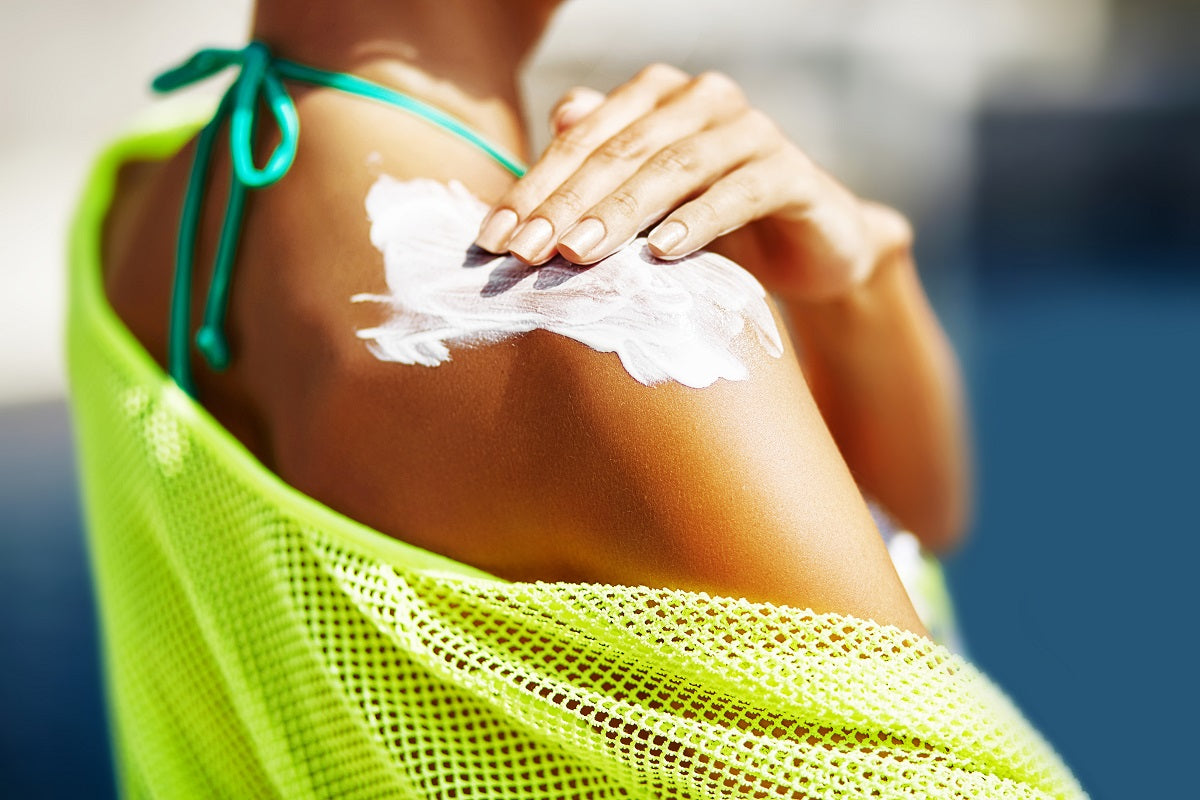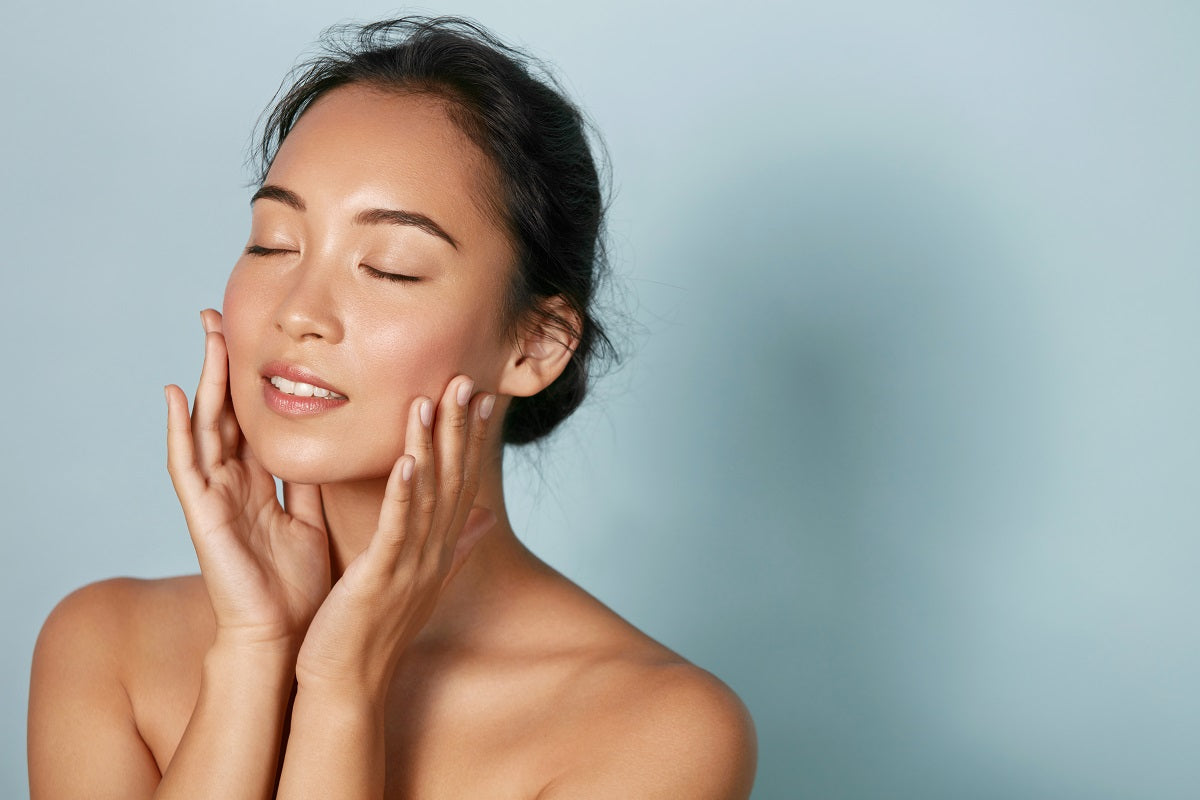
What is Non-Nano Zinc Oxide Sunscreen
From non-nano zinc oxide to titanium oxide to ingredients you may not even be able to pronounce (like ensulizole), navigating the sunscreen aisle at your local pharmacy can often feel like reviewing your high school chemistry textbook. Protecting your skin from the sun and preventing skin cancer shouldn’t require an AP-level understanding of science. While some aspects of sunscreen, such as SPF, can help guide your summertime skin care decisions, you may still have other questions about sunscreen, such as:
What is non-nano zinc oxide and what does zinc do for skin?
In this article, we’ll answer this question and also discuss:
- How non-nano zinc oxide work
- Why non-nano zinc oxide is used in sunscreen
- Whether non-nano zinc oxide is safe
- How frequently you should use a sunscreen containing non-nano zinc oxide
- Other benefits non-nano zinc can offer your ski
Non-Nano Zinc Oxide 10
Non-nano zinc oxide refers to a type of zinc oxide—a powdered mineral used in sunscreens to protect the skin from UVA rays and UVB rays. Traditional zinc oxide is composed of nanoparticles. These nanoparticles are so tiny, that they’re measured in billionths of a meter and are invisible to the naked eye. Non-nano zinc oxide, on the other hand, is composed of larger particles, which typically measure between 100 and 2,500 nanometers.1
In regular zinc oxide sunscreens, the nanoparticles are broken up into tiny pieces through a process called micronizing.2 This makes it possible to apply zinc oxide sunscreens without leaving a slick white film or white residue on your skin. The zinc oxide nanoparticles are so small that they travel through your skin, whereas the larger particles within non-nano zinc oxide sunscreens sit atop the skin to create a UVA and UVB barrier. While this may leave behind some white residue, non-nano zinc oxide formulas offer effective protection and are safe for daily use
There have been claims that the nanoparticles in zinc oxide sunscreens that are absorbed into the skin may enter the bloodstream and be harmful to your health. However, these claims have not been substantiated, and studies have shown that there are no risks associated with applying regular zinc oxide sunscreens with nanoparticles.3 So don’t stop using your zinc oxide sunscreen. It can still offer much-needed protection from the sun’s harmful rays (UVA and UVB rays)
How Does Non-Nano Zinc Oxide Work in Sunscreen
To understand how non-nano particles work in non-nano zinc oxide sunscreens, let’s first break down sunscreens in general. There are two basic categories of sunscreen
- Chemical blockers – These sunscreens contain chemicals that absorb UV rays from the sun. Typically, these chemicals include oxybenzone, avobenzone, octocrylene, and aminobenzoic acid.
- Physical blockers – Sunscreens that use zinc oxide in both nano and non-nano forms are categorized as physical blockers. They reflect the sun’s UV rays and keep them from reaching your skin. Physical blockers are also often referred to as mineral sunscreens.
This means non-nano zinc oxide works as a physical blocker in sunscreen. The larger particles act as a protective barrier to not only block UVA and UVB rays but also to reflect them away from your skin
Is Non-Nano Zinc Oxide Safe
Put simply, yes—non-nano zinc oxide is safe for your body and overall health. It’s even safe for the environment.
Safe for Your Bod
For years, zinc oxide has remained a common sunscreen ingredient due to its effectiveness and safety. There are no studies that show zinc oxide, in nano and non-nano forms, is harmful to your body, your skin, or your overall health. This means you can use zinc oxide sunscreen with either micronized or larger particles without worrying about potential health risks.
Safe for the Environment
Another reason we love non-nano zinc oxide sunscreens is because they’re better for the environment. Many of the ingredients found in chemical blocker sunscreens have been proven to be harmful to the environment when they wash off our skin and enter oceans and other waterways. In particular, these chemicals are extremely damaging to coral reefs and marine animals. Zinc oxide, especially the non-nano form, is believed to be safer for ocean life.4
Interestingly, products labeled “reef-safe” are not always safe for the environment. Some sunscreen manufacturers will use this term because it has a loose definition that isn’t strictly regulated by the federal government. If you see the term reef safe on your sunscreen, check to make sure it’s a mineral-based sunscreen containing zinc oxide to confirm it’s truly environmentally friendly
Are There Any Problems Associated with Non-Nano Zinc Oxide
Although there are no health problems associated with the use of non-nano zinc oxide, some complain that this type of sunscreen can leave a white residue on the skin. Outside of this minor cosmetic inconvenience, the protection and safety that non-nano zinc oxide offers are pretty amazing
How Often Should I Use Sunscreen with Non-Nano Zinc Oxide
In short, you should use a non-nano zinc oxide sunscreen product every day, regardless of whether the sun is shining or if it’s hiding behind the clouds. There is no downside to doing so, and in fact, regularly using sunscreen will effectively protect your skin from various types of sun damage, including skin cancer, uneven skin tone, and premature aging.5
Skin Cancer
Sunscreen is one of your most powerful weapons in the fight against skin cancer—cancer with the highest occurrence rate of all cancers in the U.S., with 1 in 5 people expected to be diagnosed in their lifetime.6 In fact, more than nine thousand people are diagnosed with skin cancer in the U.S. every day.
The three most commonly diagnosed types of skin cancer include melanoma, squamous cell sarcoma, and basal cell sarcoma. Seeing as the vast majority of melanoma cases can be directly attributed to UV exposure, adding a non-nano zinc oxide sunscreen to your daily skincare routine is an easy and effective way to significantly reduce your risk of developing this preventable disease.
Uneven Skin Ton
Although far less serious than skin cancer, uneven skin tone can nevertheless be a frustrating effect of unprotected sun exposure, and in fact, may be a precursor to skin cancer. This is because uneven skin tone, or “sun spots,” are a sign of overexposure. To protect itself from the sun’s harmful rays, your skin produces more melanin, which results in dark patches of skin, flat brown spots, and uneven pigmentation.
If you notice uneven skin tone, listen to your skin, and make sure to apply sunscreen more consistently. Your melanin won’t be able to prevent more serious sun damage, such as sunburns or skin cancer.
Premature Aging
Without a barrier of protective non-nano zinc oxide, exposure to UV rays can break down your skin’s collagen, causing wrinkles, loss of elasticity, and dryness. These signs of sun damage not only indicate overexposure (which can, in turn, increase your risk of skin cancer), but they also lead to premature aging.
Other Skin Benefits You Can Experience with Non-Nano Zinc Oxide Sunscreen
Aside from reducing your risk of skin cancer, preventing uneven skin tone, and fighting off signs of aging, there are a multitude of zinc benefits for the skin
Zinc has been proven to help with
- Acne – Does zinc help acne? Well, Zinc is anti-inflammatory and anti-bacterial. This means it reduces the inflammation that makes pimples pop up, kills the bacteria that keep pimples coming back, and boosts your overall skin immunity. It also helps regulate the production of oil that can clog your pores, so over time, regular use of zinc can help prevent new blemishes from forming.
- Uneven skin – If your skin is red, itchy, or otherwise irritated, zinc oxide can provide a solution. Zinc oxide is commonly found in eczema and diaper rash creams because of its ability to calm and soothe the skin by stimulating the production of new cells.
- Fade scars – If past breakouts have left your skin scarred, zinc can help with that too. When applied topically, zinc oxide can reduce the appearance of scarring over time, and even help heal wounds more quickly
Protect Your Skin and Your Summer Glow with Averr Aglow
So let’s review: zinc is a mineral found in many skincare products, including sunscreen. While both nano and non-nano zinc oxide can protect your skin from harmful UV rays, non-nano zinc oxide offers larger particles that lay atop your skin to create the ultimate sun-blocking barrier, preventing skin cancer, sun spots, premature aging, and environmental damage. There’s no reason not to incorporate a non-nano zinc oxide sunscreen into your daily skincare routine.
Not sure where to find the best non-nano zinc oxide sunscreen?
Here at Averr Aglow, we want you to feel empowered to protect your skin from the sun without sacrificing your gorgeous complexion. We also care about the environment and understand the importance of protecting our oceans from toxic chemicals. That’s why we’ve crafted a lightweight, moisturizing mineral face sunscreen to protect your complexion while also keeping our oceans healthy.
Explore our entire line of all-natural, skin care products today to find the solution to whatever it is you’re searching for, from sun protection to acne treatment and everything in between. You can even take our skincare routine quiz to discover the best plan for your unique skin. Protect your skin, and find your glow, with Averr Aglow.
Sources:
- Australian Cancer Council.Nanoparticles and Sunscreen.https://www.cancer.org.au/cancer-information/causes-and-prevention/sun-safety/about-sunscreen/nanoparticles-and-sunscree
- Harvard Health.The Science of Sunscree.https://www.health.harvard.edu/staying-healthy/the-science-of-sunscree
- Environmental Working Group.Nanoparticles in Sunscreens.https://www.ewg.org/sunscreen/report/nanoparticles-in-sunscreen
- Consumer Reports.The Truth About Reef Safe Sunscreen.https://www.consumerreports.org/sunscreens/the-truth-about-reef-safe-sunscreen
- Journal of Investigative Dermatology.Support for the Safe Use of Zinc Oxide Nanoparticle Sunscreens.https://www.jidonline.org/article/S0022-202X(18)32655-1/fulltex
- American Academy of Dermatology.Skin Cancer.https://www.aad.org/media/stats-skin-cance






